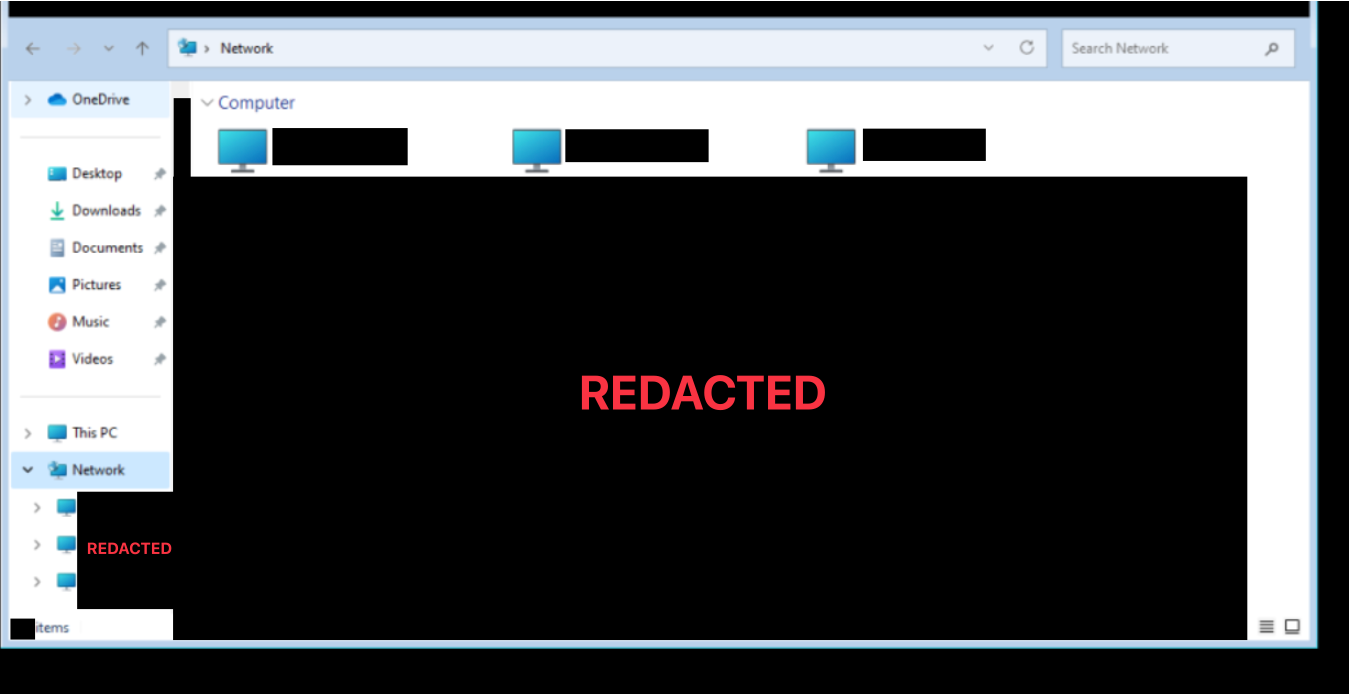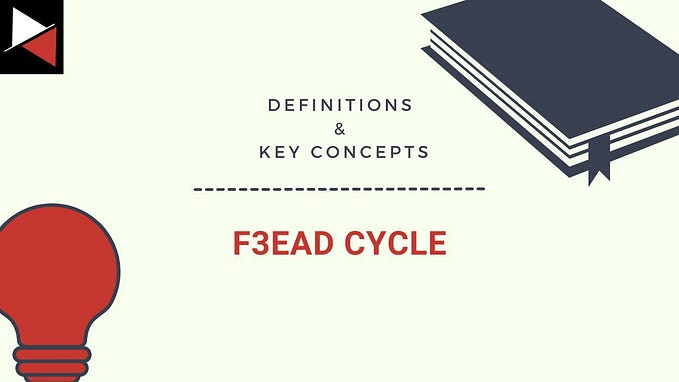This is the second blog of this series which displays the actions that threat actors are taking upon post-exploitation efforts. Just a reminder, these short blog posts come with sanitized artifacts of the intrusion I observed. This is so people can use it for training materials or recreate the investigation steps I followed in their own lab. You can find the artifacts in the repo below.
Intrusion_data: https://github.com/tsale/Intrusion_data
Summary
In the first week of July, I observed post-exploitation activity from an Ursnif malware initial infection. Post-exploitation activities were very rapid, with threat actors enabling the VNC feature of the malware to interact with the infected host. Through VNC’s graphical interface, they quickly searched for important documents on mapped share drives. They later used the command prompt to run enumeration commands before using process injection to spawn a Cobalt Strike beacon.
Several hours after the initial infection, the Cobalt Strike beacon came to life and threat actors started enumerating the environment. They used their existing beacon session and attempted to elevate their access using a zerologon exploit. After about 10 hours, I witnessed them spawning a new Cobalt Strike beacon using a PowerShell loader. This second beacon communicated with a different C2 IP. This was the last activity I observed through my analysis, it is possible that the threat actors left the infected environment or that the gap of inactivity allowed for response and remediation of the infected host.
Further Intelligence Gathering
During the ursnif VNC sessions, I was able to extract interesting data from the unencrypted network communication. Specifically, I managed to obtain the threat actors’ clipboard as well as screenshots. This information provides valuable insight into the attackers’ tactics, techniques, and procedures (TTPs). It allows us to see the attack from their eyes. Their respective sections below will cover the relevant details regarding the intrusion.
The Hands-On-Keyboard (HOK) activity began 30 minutes after the initial execution of the Ursnif malware. This emphasizes the importance of promptly addressing initial access broker malware. During the intrusion, it seemed like the infected host was shared among multiple groups. This is due to the long periods of inactivity observed, the different C2 channels as well as the repetitive enumeration commands on every newly established connection to a different C2 infrastracture. Trustworthy threat intelligence sources reveal how criminals divide responsibilities during an intrusion after the initial infection.
Establishing initial access themselves is no longer really required for threat actors, there’s a good chance someone else has already done it and is happy to sell it on. ~ source by @BushidoToken
It is also possible for different threat actors to often specialize in different aspects of an attack. In this case, the job of threat actors that responded to the initial infection could have been to profile the victim host and organization. There was no activity from the beacon loaded in memory for five hours after the initial infection.

Due to the sensitivity of the enclosed data, the VNC communication was not included in the network traffic artifacts. However, information on how to extract this data as well as sanitized screenshots will be shared down below.
Initial Access
The phishing campaign that resulted in this intrusion targeted Italian organizations. The phishing email contained a PDF attachment that started the malicious execution chain, as reported by @JAMESWT_MHT in this thread.
This blog will focus on the malicious Ursnif DLL loader and the post-exploitation activity after the malware was installed on the infected host.
Execution
After the Ursnif DLL was loaded in memory, a series of automated activities took place in a very short timeframe. Here’s a visualization of the execution flow:

The malware used mshta.exe to run an encoded script from Registry Key via the Explorer.exe parent process as part of the initial automated tasks.
C:\Windows\System32\mshta.exe” “about:<hta:application><script>Vsde=’wscript.shell’;resizeTo(0,2);eval(new ActiveXObject(Vsde).regread(‘HKCU\\\Software\\AppDataLow\\Software\\Microsoft\\98A2C439–17C5–8A1F-614C-3B5E25409F72\\\ToolAbout’));if(!window.flag)close()</script>
Here is a breakdown of the script:
- ‘about:’: This starting element creates an executable HTML Application loaded as a data URL.
- ‘<hta:application><script>Vsde=’wscript.shell’:’ creates a Windows scripting host shell object.
- ‘resizeTo(0,2);’: makes the application basically invisible.
- ‘eval(new ActiveXObject(Vsde).regread(‘HKCU\\\\Software\\AppDataLow\\Software\\Microsoft\\98A2C439–17C5–8A1F-614C-3B5E25409F72\\ToolAbout’));’: This accesses and reads the registry key specified, and then evaluates/runs the code found within it.
- ‘if(!window.flag)close()’: closes the script if a specific flag is not found.
The code within the registry was a PowerShell command designed to execute scripts concealed within the specified registry key, all while using built-in aliases to obscure the exact function being run.
The PowerShell command:
powershell.exe” new-alias -name ricvpy -value gp; new-alias -name xhpsqr -value iex; xhpsqr ([System.Text.Encoding]::ASCII.GetString((ricvpy “HKCU:Software\AppDataLow\Software\Microsoft\98A2C439–17C5–8A1F-614C-3B5E25409F72”).MarkTime))
For a detailed explanation of the Ursnif execution flow, please see the relevant report that we (The DFIR Report team) released back in January: Unwrapping Ursnifs Gifts. The TTPs are identical.
💡 Detection Opportunity
We can detect and hunt for process execution events that are using command line interpreters such as mshta.exe or powershell.exe to read, decode and execute strings from the registry. (see Sigma rule on the IOC section at the end of the blog)
Persistence
Ursnif created a persistence through the registry run keys by adding an LNK file pointing to the PowerShell executable and including parameters to execute a PowerShell script saved on disk.
All registry key names and malicious artifacts are randomized with each execution by the malware.
\REGISTRY\USER\<SID>\Software\Microsoft\Windows\CurrentVersion\Run\ProcessFolder
cmd.exe /c start C:\\Users\\<user>\\ ProcessFolder.lnk -ep unrestricted -file C:\\Users\\<user>\\ToolAbout.ps1"
💡 Detection Opportunity
Identify any Windows registry Run and RunOnce keys That contain parameters to facilitate the execution of scripts under the C:\Users directory. Depending on the environment, you may need to create a baseline of scripts that are scheduled to run on startup and exclude them.
Defense Evasion
Throughout the intrusion, there have been many occasions where the malware used process injection. Ursnif used remote process injection to execute a beacon by spawning a thread under conhost.exe.

In a different example, Ursnif injected into explorer.exe to perform multiple functions.

💡 Detection Opportunity
A beacon running under the conhost.exe process was reaching out to malicious infrastructure. This is suspicious behaviour, as conhost.exe should not be making external connections, especially at high intervals. We can use this as an example case to detect any unexpected Windows binary connections to hosts outside of our network.
Discovery
After the initial infection, Ursnif executed the following automated commands on the infected host. The command’s output was saved as “.bin1” files in C:\Users\<user>\Appdata\Local\Temp.
cmd /C “wmic computersystem get domain |more > C:\Users\<user>\AppData\Local\Temp\4FCE.bin1”
cmd /C “echo — — — →> C:\Users\<user>\AppData\Local\Temp\4FCE.bin1”
cmd /C “systeminfo.exe > C:\Users\<user>\AppData\Local\Temp\4FCE.bin1”
cmd /C “net view >> C:\Users\<user>\AppData\Local\Temp\4FCE.bin1”
cmd /C “nslookup 127.0.0.1 >> C:\Users\<user>\AppData\Local\Temp\4FCE.bin1”
cmd /C “tasklist.exe /SVC >> C:\Users\<user>\AppData\Local\Temp\4FCE.bin1”
cmd /C “driverquery.exe >> C:\Users\<user>\AppData\Local\Temp\4FCE.bin1”
cmd /C “reg.exe query “HKLM\SOFTWARE\Microsoft\Windows\CurrentVersion\Uninstall” /s >> C:\Users\<user>\AppData\Local\Temp\4FCE.bin1"
cmd /C “nltest /domain_trusts >> C:\Users\<user>\AppData\Local\Temp\4FCE.bin1”
cmd /C “nltest /domain_trusts /all_trusts >> C:\Users\<user>\AppData\Local\Temp\4FCE.bin1”
cmd /C “net view /all /domain >> C:\Users\<user>\AppData\Local\Temp\4FCE.bin1”
cmd /C “net config workstation >> C:\Users\<user>\AppData\Local\Temp\4FCE.bin1”
cmd /C “net view /all >> C:\Users\<user>\AppData\Local\Temp\4FCE.bin1”
cmd /U /C “type C:\Users\<user>\AppData\Local\Temp\4FCE.bin1 > C:\Users\<user>\AppData\Local\Temp\4FCE.bin & del C:\Users\<user>\AppData\Local\Temp\4FCE.bin1”
cmd /C “net use >> C:\Users\<user>\AppData\Local\Temp\F7A7.bin1”
cmd /C “echo — — — →> C:\Users\<user>\AppData\Local\Temp\F7A7.bin1”
cmd /U /C “type C:\Users\<user>\AppData\Local\Temp\F7A7.bin1 > C:\Users\<user>\AppData\Local\Temp\F7A7.bin & del C:\Users\<user>\AppData\Local\Temp\F7A7.bin1”After executing the enumeration commands, the malware exfiltrated and deleted the files with the .bin extension.
Furthermore, I observed many enumeration commands via the Hands-On-Keyboard (HOK) activities. Below are the enumeration commands in question.
cmd.exe /C whoami/all
cmd.exe /C net group “Domain Admins” /Domain
cmd.exe /C systeminfo
cmd.exe /C nltest /dclist: domain.local
cmd.exe /C nltest /domain_trusts
cmd.exe /C ipconfig /all
cmd.exe /C whoami /all
cmd.exe /C ping <DomainController>.domain.local
cmd.exe /k whoami /groups
cmd.exe /k net use
cmd.exe /k arp -a
cmd.exe /k tasklist
cmd.exe /k ping 8.8.8.8💡 Detection Opportunity
We can detect the many auto-discovery commands that run in a small time frame, usually within 1 minute from start to finish. Most initial access broker malware runs similar discovery commands in a short time span. This detection technique can help identify other malware or suspicious activity in our network.

Command and Control
Common control communication was established initially through Ursnif malware and later on via Cobalt strike beacons. Please see below the atomic indicators related to the C2 infrastructure.
Ursnif VNC
Thanks to @0xThiebaut’s tool PCAPeek, I was able to reconstruct some of the VNC traffic. More specifically, I was able to collect a threat actor’s clipboard data and collect some valuable insights into their operations.
Use of LightShot capturing tool
The threat actors behind Ursnif appeared to make users of LightShot, the screen-capturing tool. Throughout their HOK activity, I found many links in their clipboard that pointed to an uploaded screenshot to https://prnt.sc. The screenshots showed different details about the infected host, such as its network shares.
Misc Interesting Clipboard Data
Along with multiple copy-paste commands, there were the servers that hosted the admin panel they used for this campaign. The URL paths and parameters found as part of the clipboard data indicated sensitive server resources related to the malware campaign.
In the interest of information gathering and ongoing threat intelligence efforts, I will not make any of the information related to the admin panel public. The information is shared with trusted groups of the infosec community.
Visuals
Below, you can see sanitized visuals of the threat actor’s HOK activity recovered using PCAPeek.



IOC/IOA
Cobalt Strike C2
173.44.141.237:80
170.130.165.159:80
173.44.141.199:80
152.89.198.29:80
173–44–141–47.nip.ioUrsnif C2
http://avas1t.de/in/loginq/...
http://109.105.198.129/pictures/…
185.82.127.183:80
http://31.172.83.49/pictures/…
91.201.65.64:9955 (VNC)
91.201.65.64:9989 (VNC)
http://delideta.com/pictures/... (IP = 91.212.166.44)
http://itwicenice.com/pictures/... (IP = 91.212.166.44)Cobalt Strike Profile
BeaconType: HTTP
Port: 80
SleepTime: 45000
MaxGetSize: 2801745
Jitter: 37
PublicKey_MD5: a37589ce24a7082ed1c6728b50d73d02
C2Server: 173.44.141.237,/jquery-3.3.1.min.js
UserAgent: Mozilla/5.0 (Windows NT 6.3; Trident/7.0; rv:11.0) like Gecko
HttpPostUri: /jquery-3.3.2.min.js
Malleable_C2_Instructions: Remove 1522 bytes from the end
Remove 84 bytes from the beginning
Remove 3931 bytes from the beginning
Base64 URL-safe decode
XOR mask w/ random key
HttpGet_Metadata: ConstHeaders
Accept: text/html,application/xhtml+xml,application/xml;q=0.9,*/*;q=0.8
Referer: http://code.jquery.com/
Accept-Encoding: gzip, deflate
Metadata
base64url
prepend “__cfduid=”
header “Cookie”
HttpPost_Metadata: ConstHeaders
Accept: text/html,application/xhtml+xml,application/xml;q=0.9,*/*;q=0.8
Referer: http://code.jquery.com/
Accept-Encoding: gzip, deflate
SessionId
mask
base64url
parameter “__cfduid”
Output
mask
base64url
print
HttpGet_Verb: GET
HttpPost_Verb: POST
Spawnto_x86: %windir%\syswow64\dllhost.exe
Spawnto_x64: %windir%\sysnative\dllhost.exe
Proxy_Behavior: Use IE settings
Watermark_Hash: bfnETSwzb1Xsa2g6gr+auA==
Watermark: 674054486
bStageCleanup: True
bCFGCaution: False
KillDate: 0
bProcInject_StartRWX: False
bProcInject_UseRWX: False
bProcInject_MinAllocSize: 17500
ProcInject_PrependAppend_x86: b’\x90\x90'
Empty
ProcInject_PrependAppend_x64: b’\x90\x90'
Empty
ProcInject_Execute: ntdll:RtlUserThreadStart
CreateThread
NtQueueApcThread-s
CreateRemoteThread
RtlCreateUserThread
ProcInject_AllocationMethod: NtMapViewOfSectionSuricata Rules
ET MALWARE Ursnif Variant CnC Data Exfil
ET MALWARE Ursnif Variant CnC Beacon 3
ET MALWARE Ursnif Variant CnC Beacon — URI Struct M1 (_2B)
ET MALWARE Ursnif Variant CnC Beacon — URI Struct M2 (_2F)
ET HUNTING GENERIC SUSPICIOUS POST to Dotted Quad with Fake Browser 1
ET EXPLOIT Possible Zerologon Phase 1/3 — NetrServerReqChallenge with 0x00 Client Challenge (CVE-2020–1472)
ET USER_AGENTS WinRM User Agent Detected — Possible Lateral Movement
ET MALWARE Windows Microsoft Windows DOS prompt command Error not recognized
ET MALWARE Windows dir Microsoft Windows DOS prompt command exit OUTBOUND
ET MALWARE Windows TaskList Microsoft Windows DOS prompt command exit OUTBOUND
ET MALWARE Windows arp -a Microsoft Windows DOS prompt command exit OUTBOUND
ET INFO Dotted Quad Host RAR Request
ET MALWARE Cobalt Strike Malleable C2 JQuery Custom Profile M2
ET MALWARE Cobalt Strike Activity (POST)
ET MALWARE Cobalt Strike Beacon Activity (GET)
Sigma Rules
Custom
Ursnif Discovery Commands Redirection
Explorer UAC Bypass via NOUACCHECK
Sigma Repo
Suspicious Csc.exe Source File Folder
Usage Of Web Request Commands And Cmdlets
Explorer NOUACCHECK Flag
Share And Session Enumeration Using Net.EXE
Non Interactive PowerShell Process Spawned
Suspicious PowerShell Parameter Substring
PowerShell Download Pattern
Whoami Utility Execution
Ursnif Loader
Mshta Executing from Registry
Artifacts
b565aa423ca4ba6e8c6b208c22e5b056.dll — 894668791d06262dd16740235faa3b1672e2cb5cf171954f29abaca421c09265
ToolAbout.ps1–6e8b848e7e28a1fd474bf825330bbd4c054346ad1698c68e7a59dd38232a940a
beacon.bin — 1324e7654a144c20637820a022d49c449cca1ff1d2c7e040bf23421d52146e93
Thank You Notes
A special thanks to @JAMESWT_MHT and @reecdeep for continuously sharing information related to the latest campaigns. You make the world a safer place 🙏








